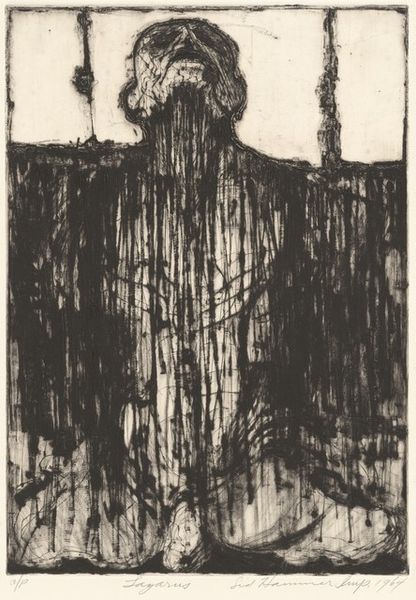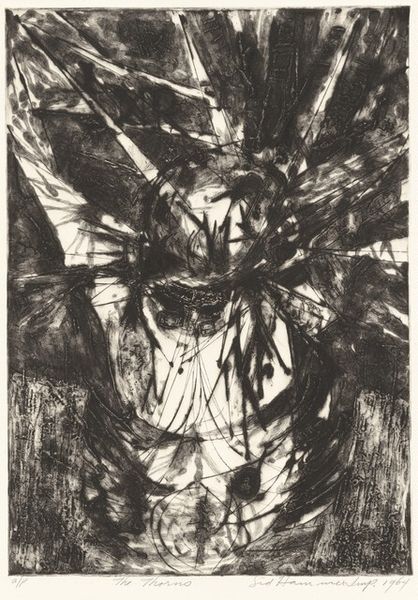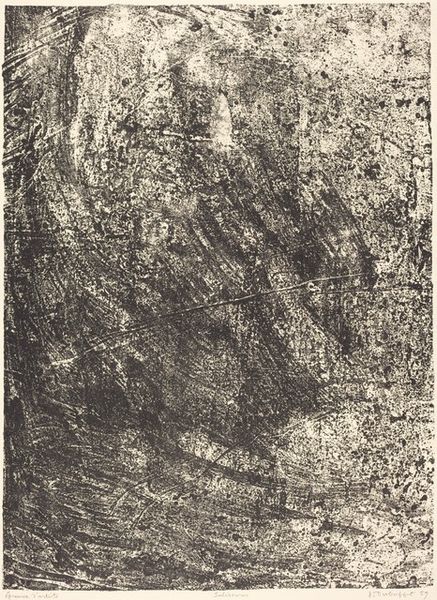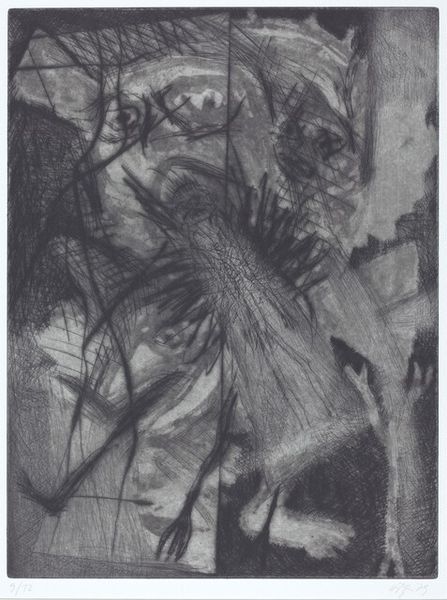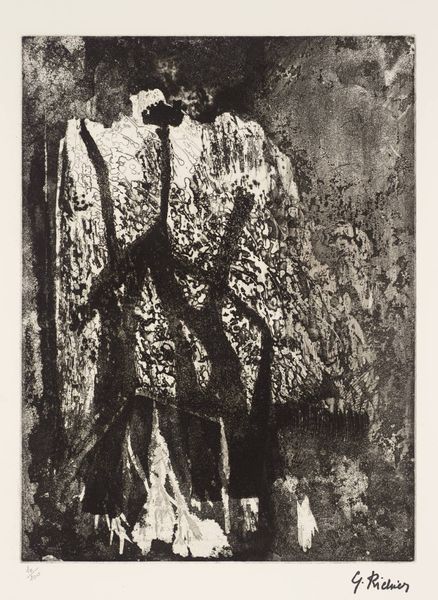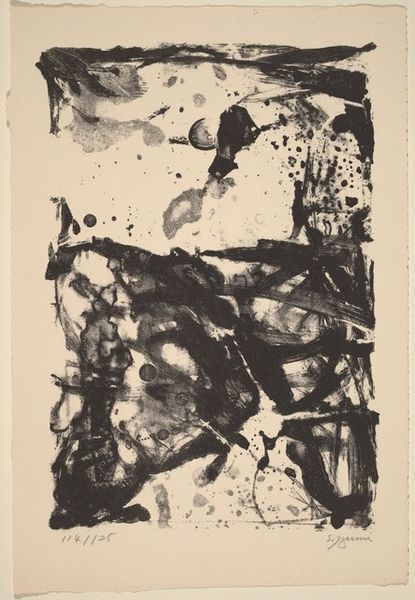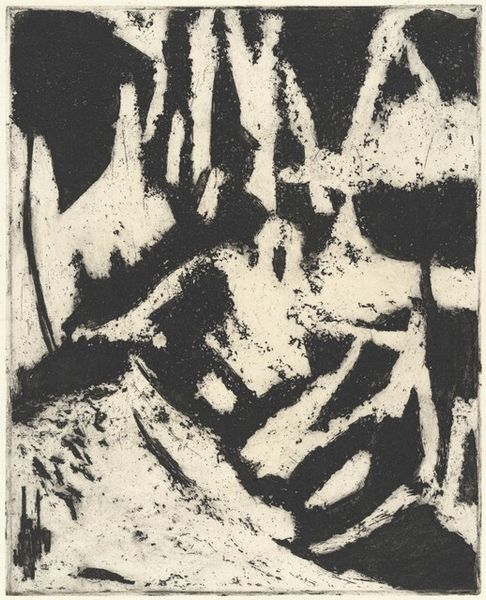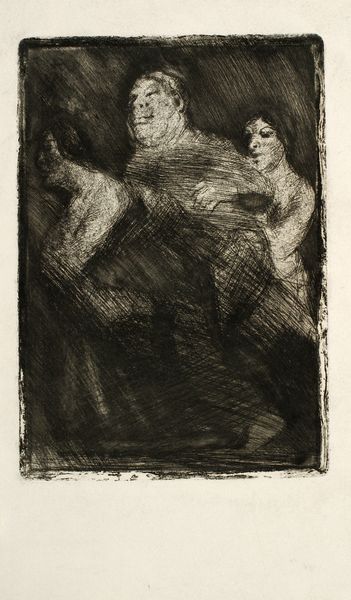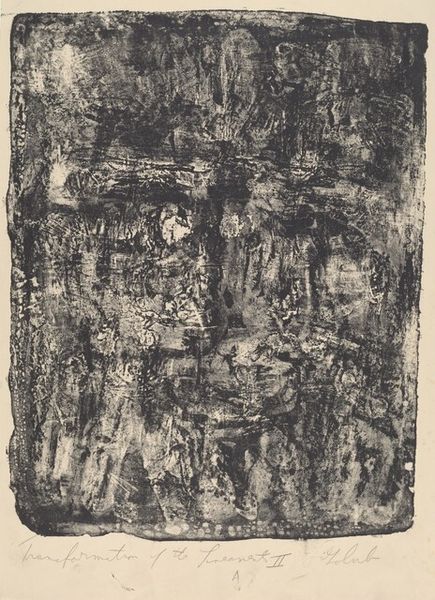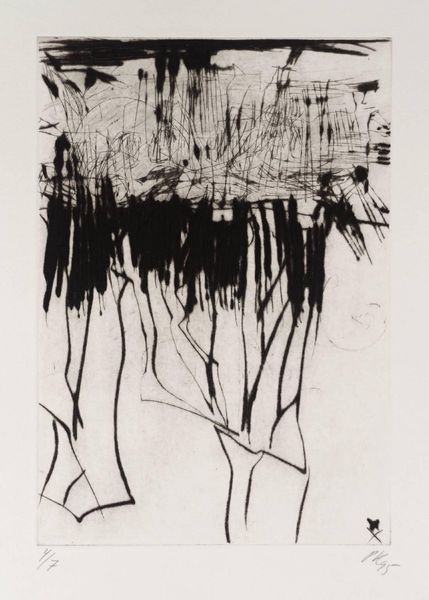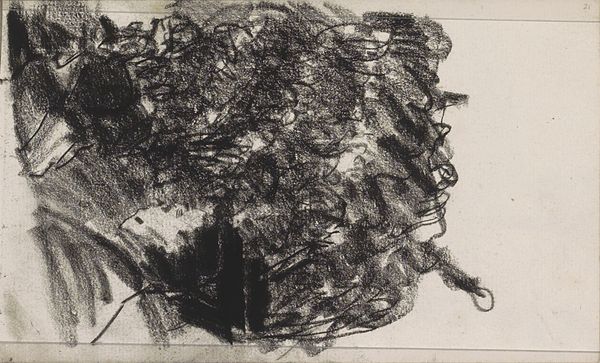
graphic-art, print, etching
#
graphic-art
# print
#
etching
#
figuration
#
abstraction
#
realism
#
monochrome
Dimensions: plate: 52.71 × 37.47 cm (20 3/4 × 14 3/4 in.) sheet: 75.88 × 55.88 cm (29 7/8 × 22 in.)
Copyright: National Gallery of Art: CC0 1.0
Curator: Before us, we have Sid Hammer's "Warriors," a compelling etching created in 1964. Editor: It's stark, immediate, almost brutal. The overwhelming darkness gives the figures a haunting presence. Curator: As a print, the textures and tones are a key part of its expressive force. Notice how the process of etching allows for these incredibly rich blacks. What do you make of their dress, specifically those brimmed hats? Editor: I see these heavy layers of clothing, almost like shields. The hats further obscure their features, adding to the sense of anonymity, the lack of individuality. What about the dripping lines at the bottom? Do you interpret these as marks of a process? Curator: Precisely. That bleeding effect can be interpreted literally, speaking to the consumption that warfare relies on. The etching is rendered such that any single drop pulls the eye down, visually conveying themes of mortality or defeat. Editor: The composition also guides our gaze. There are no individual identities for us to resolve; there’s this collective, amorphous shape instead, which is critical for understanding their state. How can one even have self-expression under circumstances of armed conflict? Curator: Right, and I think Hammer is using the monochrome aesthetic to suggest an absence, not just of color, but also of individual character, lost in their uniforms. In focusing on what we lose in violence and war, his choice of such direct realism is compelling. Editor: Well, by using this form, we can interpret this moment beyond just its subject; we come to know an affective experience through his skillful manipulation of form. Curator: Indeed, and that, in turn, tells us so much about the broader material conditions of war. The necessity of anonymity and submission and its reduction to basic need. Editor: An intensely powerful, evocative work. I find that the process Hammer undertakes—in selecting the monochrome and allowing those stark formal details to be prevalent—becomes part of how we read meaning into "Warriors." Curator: For me, the focus on print production offers a way of understanding its time period; its focus on monochrome allows me to draw themes in tandem to industrial output, such as an automobile assembly. But overall, I found the effect to be profound.
Comments
No comments
Be the first to comment and join the conversation on the ultimate creative platform.
